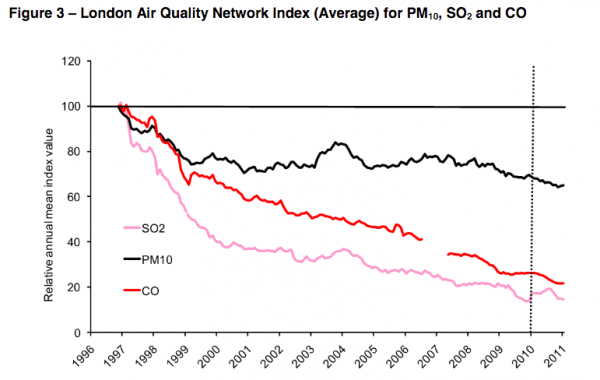Population density is the average number of people living per square mile/km.

A high population density implies that the population is high relative to the size of the country. Countries, such as Belgium and the Netherlands have a high population density. Large countries, such as Australia and Canada have very low densities. Though this low density is skewed by the fact large areas of Australia and Canada are considered inhospitable places to live, due to desert / Arctic conditions.
There is little correlation between population density and economic development. Bangladesh and Japan have similar population densities, both Japan has much higher real GDP per capita.
Most countries have seen a very significant rise in population densities over the past two hundred years. This rise in population density has been consistent with rising living standards and a better quality of life. However, others are concerned that a rising global population density could lead to a strain on resources, leading to food shortages, congestion and loss of the environment.
Benefits of a rising population density
- Economies of scale in national infrastructure. If you have a motorway network/train system connecting different parts of the country, a larger population density will help reduce the average costs of the transport network.
- Urban areas tend to be more energy efficient. Rural areas have a higher per-capita energy composition. For example, in remote areas, people will have to drive a long way to shops. In heavily populated urban areas, shops and facilities are likely to be within walking distance. Living in heavily built areas will benefit from your neighbour’s heat. However, if you look at suburbs, the situation is different with higher incomes leading to more energy consumption without the density of close housing in urban areas.
- Urban areas also make efficient city-wide public transport networks more efficient. As population density rises, the city is almost forced to switch from cars to more space efficient forms of transport, such as underground railway systems.
- Greater intellectual capital. Rising population leads to greater scope society will produce entrepreneurs and innovators, who come up with improved technology and business which helps to improve living standards.
- Technology has mitigated the negative forecasts of many who feared rising population. Malthus predicted in the Nineteenth Century, a rising population would lead to food shortages. The population has risen considerably, but areas of high population density have not seen the food shortages because of improved yields from agriculture and the ability to trade food.
- Technology enables higher living standards with lower levels of population. For example, in the 1950s, UK houses were often using coal fires to keep warm, leading to smogs and high levels of pollution in cities, but these smogs have been cleaned up. In theory, there is the scope for meeting energy needs from renewable energy, such as solar power.

- Despite rising population, London has seen some improvement in air quality standards in past decades. Though it should be noted O3 has been rising and air quality is still amongst the worst recorded in the UK.
- Rising population creates demand for labour and increased supply. Some fear, a rise in population (e.g. due to net migration) may lead to unemployment as migrants take jobs from native workers. However, a rising population both increases supply of labour and creates new demand from higher economic growth.
- Globalisation means countries are increasingly interdependent and don’t need to be self-sufficient. A fear of rising population density is that it requires a country to import food. However, the UK has been a net importer of food for many years, and apart from the blockades of the World wars has not seen any food shortages. It doesn’t make sense for any country to be self-sufficient in all goods and services. Greater specialisation enables increased living standards. Countries with higher population densities are likely to see increased specialisation in industries suited to urban environments, such as the financial services of London.
Problems of a rising population density
- Pollution. Although we have cleaned up the visible smogs. Air quality is often still poor in heavily built-up areas. Rising population makes it harder to reduce pollution and improve air quality.
- Limit to improvement in agricultural productivity. Malthus massively underestimated potential for agricultural productivity to improve. However, increased use of fertilizers and pesticides has diminishing returns. Past improvements in agricultural yields is no guarantee, yields will keep rising. More turbulent weather, e.g. water shortages could place strain on global food production to meet the demands from rising global population. Countries with high population densities are more likely to have to import food.
- Global rise in population is so marked that it is having uncertain impacts of global environments. The rise in number of people in recent decades is unprecedented. Technology is unable to mitigate the impact on use of raw materials and pollution. For example, burning of fossil fuels is leading to higher levels of CO2, which could have potential dire consequences for the world’s environment and global weather.
- Congestion. With higher population densities, we can see road and transport congestion, unless there are satisfactory solutions in forms of pedestrian areas, good transport and new roads
- The biggest problem of higher population density is the potential loss of ‘green-belt’ land impacting on quality of life. Many people value green spaces as an important factor in the quality of life. If we lose all the countryside to roads and housing, then this reduces the quality of life.
- Limit to new roads. Rising population leads to more demand for transport, but with increased building, there is limited space for new road.
Should we be worried about a rising population density?
- Areas of high population density are often because they are seen as a desirable place to live. People move to live and work in London, despite high house prices, air pollution and congestion because there are many desirable amenities. People living in more rural areas may be likely to resist moves to increase population density because they are attracted to a quiet village life.
- Higher population density has definitely enabled economic and social development. But, at the same time the growth in the overall population of the planet is threatening to exacerbate many environmental and economic population, such as over-fishing, higher pollution, loss of habitat and stress on water.
| Name | Population Density (/km2) | Area (km2) | Population |
|---|---|---|---|
| 1,260 | 316 | 397,499 | |
| 393 | 41,526 | 16,932,500 | |
| 337 | 30,510 | 11,007,020 | |
| 269 | 243,610 | 65,542,579 | |
| 233 | 357,021 | 81,799,600 | |
| 205 | 160 | 32,842 | |
| 192 | 301,230 | 59,715,625 | |
| 207 | 41,290 | 7,301,994 | |
| 173 | 2,586 | 512,000 | |
| 146 | 468 | 68,403 | |
| 131 | 33,843 | 4,434,547 | |
| 130 | 78,866 | 10,674,947 | |
| 125 | 43,094 | 5,368,854 | |
| 124 | 312,685 | 38,625,478 | |
| 123 | 28,748 | 3,544,841 | |
| 117 | 9,248 | 803,147 | |
| 111 | 48,845 | 5,422,366 | |
| 111 | 547,030 | 63,601,002 | |
| 109 | 92,391 | 10,617,999 | |
| 108 | 29,743 | 3,262,200 | |
| 108 | 93,030 | 10,075,034 | |
| 97 | 88,361 | 7,498,001 | |
| 97 | 83,858 | 8,169,929 | |
| 95 | 20,273 | 2,048,847 | |
| 92 | 505,782 | 46,777,373 | |
| 81 | 131,940 | 11,606,813 | |
| Macedonia | 81 | 25,713 | 2,054,800 |
| 80 | 238,391 | 19,043,767 | |
| 78 | 56,542 | 4,490,751 | |
| 78 | 51,129 | 3,964,388 | |
| 76 | 603,700 | 45,396,470 | |
| 71 | 69,700 | 4,960,951 | |
| 69 | 110,910 | 7,621,337 | |
| 65 | 70,280 | 4,581,269 | |
| 50 | 207,600 | 10,335,382 | |
| 48 | 13,812 | 626,000 | |
| 44 | 65,200 | 2,881,020 | |
| 37 | 64,589 | 1,973,127 | |
| 28 | 45,226 | 1,294,236 | |
| 20 | 449,964 | 9,515,744 | |
| 16 | 338,424 | 5,410,233 | |
| 13 | 385,252 | 5,033,675 | |
| 8 | 17,075,400 | 143,100,000 | |
| 3 | 103,001 | 320,060 | |
| Total | 31.56 | 26,680,676 | 842,033,572 |
Source: Wikipedia
Related

this document is so recommended for consultation